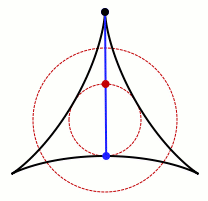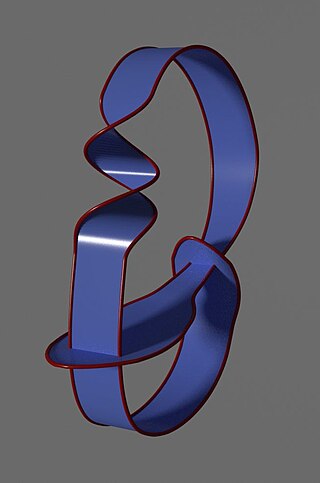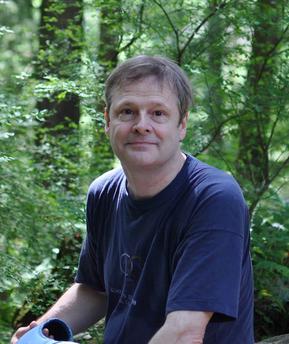
In mathematics, the Hodge conjecture is a major unsolved problem in algebraic geometry and complex geometry that relates the algebraic topology of a non-singular complex algebraic variety to its subvarieties.

In mathematics, a Kakeya set, or Besicovitch set, is a set of points in Euclidean space which contains a unit line segment in every direction. For instance, a disk of radius 1/2 in the Euclidean plane, or a ball of radius 1/2 in three-dimensional space, forms a Kakeya set. Much of the research in this area has studied the problem of how small such sets can be. Besicovitch showed that there are Besicovitch sets of measure zero.

In the field of mathematics known as functional analysis, the invariant subspace problem is a partially unresolved problem asking whether every bounded operator on a complex Banach space sends some non-trivial closed subspace to itself. Many variants of the problem have been solved, by restricting the class of bounded operators considered or by specifying a particular class of Banach spaces. The problem is still open for separable Hilbert spaces.

In mathematics, a 3-manifold is a topological space that locally looks like a three-dimensional Euclidean space. A 3-manifold can be thought of as a possible shape of the universe. Just as a sphere looks like a plane to a small and close enough observer, all 3-manifolds look like our universe does to a small enough observer. This is made more precise in the definition below.

Krystyna M. Kuperberg is a Polish-American mathematician who currently works as a professor of mathematics at Auburn University, where she was formerly an Alumni Professor of Mathematics.
In an area of mathematics called differential topology, an exotic sphere is a differentiable manifold M that is homeomorphic but not diffeomorphic to the standard Euclidean n-sphere. That is, M is a sphere from the point of view of all its topological properties, but carrying a smooth structure that is not the familiar one.
The Tait conjectures are three conjectures made by 19th-century mathematician Peter Guthrie Tait in his study of knots. The Tait conjectures involve concepts in knot theory such as alternating knots, chirality, and writhe. All of the Tait conjectures have been solved, the most recent being the Flyping conjecture.
In mathematics, the Weinstein conjecture refers to a general existence problem for periodic orbits of Hamiltonian or Reeb vector flows. More specifically, the conjecture claims that on a compact contact manifold, its Reeb vector field should carry at least one periodic orbit.
In Riemannian geometry, the sphere theorem, also known as the quarter-pinched sphere theorem, strongly restricts the topology of manifolds admitting metrics with a particular curvature bound. The precise statement of the theorem is as follows. If M is a complete, simply-connected, n-dimensional Riemannian manifold with sectional curvature taking values in the interval then M is homeomorphic to the n-sphere. Another way of stating the result is that if M is not homeomorphic to the sphere, then it is impossible to put a metric on M with quarter-pinched curvature.

Clifford Henry Taubes is the William Petschek Professor of Mathematics at Harvard University and works in gauge field theory, differential geometry, and low-dimensional topology. His brother is the journalist Gary Taubes.
In mathematics, real algebraic geometry is the sub-branch of algebraic geometry studying real algebraic sets, i.e. real-number solutions to algebraic equations with real-number coefficients, and mappings between them.
In the mathematical area of topology, the generalized Poincaré conjecture is a statement that a manifold that is a homotopy sphere is a sphere. More precisely, one fixes a category of manifolds: topological (Top), piecewise linear (PL), or differentiable (Diff). Then the statement is

In the mathematical area of knot theory, a ribbon knot is a knot that bounds a self-intersecting disk with only ribbon singularities. Intuitively, this kind of singularity can be formed by cutting a slit in the disk and passing another part of the disk through the slit. More precisely, this type of singularity is a closed arc consisting of intersection points of the disk with itself, such that the preimage of this arc consists of two arcs in the disc, one completely in the interior of the disk and the other having its two endpoints on the disk boundary.
In mathematics, Reidemeister torsion is a topological invariant of manifolds introduced by Kurt Reidemeister for 3-manifolds and generalized to higher dimensions by Wolfgang Franz and Georges de Rham . Analytic torsion is an invariant of Riemannian manifolds defined by Daniel B. Ray and Isadore M. Singer as an analytic analogue of Reidemeister torsion. Jeff Cheeger and Werner Müller proved Ray and Singer's conjecture that Reidemeister torsion and analytic torsion are the same for compact Riemannian manifolds.

Greg Kuperberg is a Polish-born American mathematician known for his contributions to geometric topology, quantum algebra, and combinatorics. Kuperberg is a professor of mathematics at the University of California, Davis.
In mathematics, the Ravenel conjectures are a set of mathematical conjectures in the field of stable homotopy theory posed by Douglas Ravenel at the end of a paper published in 1984. It was earlier circulated in preprint. The problems involved have largely been resolved, with all but the "telescope conjecture" being proved in later papers by others. Ravenel's conjectures exerted influence on the field through the founding of the approach of chromatic homotopy theory.

Thomas "Tim" Daniel Cochran was a professor of mathematics at Rice University specializing in topology, especially low-dimensional topology, the theory of knots and links and associated algebra.

Viktor L. Ginzburg is a Russian-American mathematician who has worked on Hamiltonian dynamics and symplectic and Poisson geometry. As of 2017, Ginzburg is Professor of Mathematics at the University of California, Santa Cruz.
Paul Alexander SchweitzerSJ is an American mathematician specializing in differential topology, geometric topology, and algebraic topology.
















